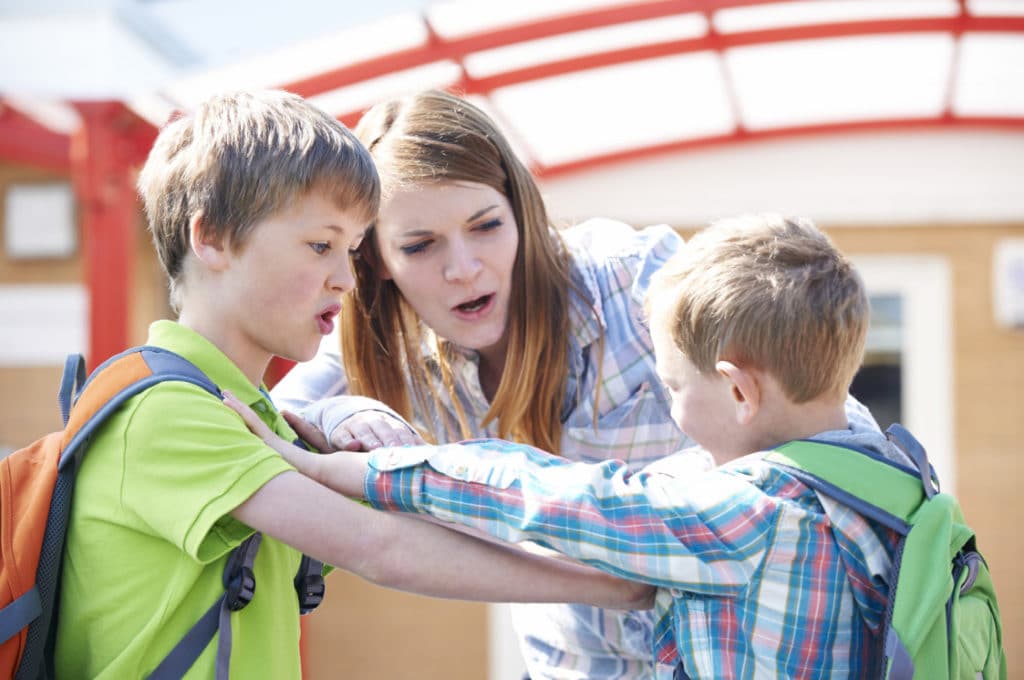Bullying in the classroom is a serious and persistent problem in schools that can have devastating effects on students’ self-esteem and mental health. With the rise of technology and changing social dynamics, the ways students experience bullying have evolved, making it even more crucial for educators to be vigilant.
Teachers play a critical role in creating a safe and inclusive environment by actively preventing and addressing student bullying. This guide provides practical strategies for how to manage bullying in the classroom and foster a culture of kindness and respect.
Setting Clear Expectations Early
To combat bullying in the classroom, you must establish a zero-tolerance policy from day one. On the first day of school, make it clear that your classroom is a safe space where kindness is the rule and bullying will not be tolerated. Don’t assume students know what bullying is.
Provide specific examples of what it looks like, including both direct behaviors like teasing or hitting, and indirect ones like social exclusion or spreading rumors. Explain the consistent consequences for this behavior so students understand the seriousness of the issue.
Beyond consequences, it’s vital to emphasize the importance of kindness and acceptance. Remind students of these principles throughout the school year, not just at the beginning. You can do this by incorporating discussions about respect and empathy into your daily lessons.
Know and Follow School and District Policies
Every school and district has specific protocols for handling bullying in the classroom. Before an incident occurs, familiarize yourself with your district’s policies and know where to find them. This will allow you to act quickly and confidently if a problem arises.
Make sure your students also understand the school-wide consequences for bullying in school. When bullying happens, follow the established policies and make sure to involve parents or guardians as outlined by the school’s guidelines. This ensures a unified approach and reinforces that the school takes bullying in the classroom seriously.
Establish a Student Reporting Protocol
Even with strong prevention measures, bullying in the classroom can still happen. When a student is bullied, they need a safe way to seek help. At the beginning of the year, create a clear and discreet protocol for students to report bullying to you.
Give them multiple options to choose from, like handing you a note, sending an email if that’s an option, or requesting a private conference with you during a break. Stress the importance of reporting student bullying as soon as possible and encourage students to report it even if they have only witnessed another classmate being bullied.
It’s important that they understand they are a part of the solution and that you value their voice.
Stay Tuned In
Teachers are constantly multitasking, but creating a bully-free environment requires your full attention. When students are working, avoid the temptation to get consumed with other tasks. Instead, circulate the classroom to maintain your presence.
This not only keeps students on task but also allows you to observe social dynamics. Listen to conversations and intervene if you hear them becoming disrespectful or unkind. This constant vigilance is key to preventing bullying before it escalates and shows students that you are actively invested in their well-being.
Follow Up
After you’ve addressed a bullying in school incident, it’s crucial to follow up with everyone involved—the students and their parents. Take a moment to check in with the victim and ask if the situation has improved.
Contact the parents and let them know you are monitoring the situation and ask if their child has expressed any further concerns. For the student who was bullying, a follow-up discussion can reinforce the consequences and provide an opportunity for them to reflect on their behavior. This shows that you take bullying seriously and are committed to ensuring a safe environment for all students by preventing future bullying.
Recognizing the Signs of Bullying
It’s important to be able to recognize the signs that a student might be involved in bullying, either as a victim or a perpetrator. Look for these subtle behavioral changes:
- For the student being bullied: Unexplained injuries, a decline in school performance, reluctance to go to school, sudden social withdrawal, or changes in eating habits.
- For the student who is bullying: An aggressive or demanding demeanor, unexplained money or new possessions, a lack of empathy, or a tendency to blame others for their problems.
Differentiating Bullying from Normal Conflict
Not every disagreement is bullying. Knowing the difference and what bullying is helps you respond appropriately.
- Conflict is a disagreement between two or more people where both parties have some power in the situation. It’s often a one-time event, and the parties involved want to resolve the issue.
- Bullying, on the other hand, is a power imbalance. It involves repeated, intentional behavior aimed at causing harm, fear, or distress to a person who is unable to defend themselves.
Collaborating with the Wider School Community
Managing bullying isn’t a solo job. The most effective approach is to involve the entire school community. Collaborate with:
- School Counselors: They can provide targeted support for both the victim and the bully.
- Administrators: Report every incident to ensure it is logged and handled according to school policy.
- Parents: Maintain an open line of communication to work together on a solution.
Frequently Asked Questions About Bullying
Q: What if the student doesn’t want me to tell their parents?
A: Explain that while you must follow school policy and involve parents, you will work with them to ensure their safety and well-being through the process. Reassure them you’re on their side.
Q: Can I get in trouble for not reporting bullying?
A: Yes. Educators are often mandated reporters. Not following school and district policy on reporting can have serious professional and legal consequences.
Q: What is the most common type of bullying?
A: The most common form of bullying in school is verbal, including name-calling, teasing, and spreading rumors. Bullying in school often can become cyberbullying outside of school hours as well.




